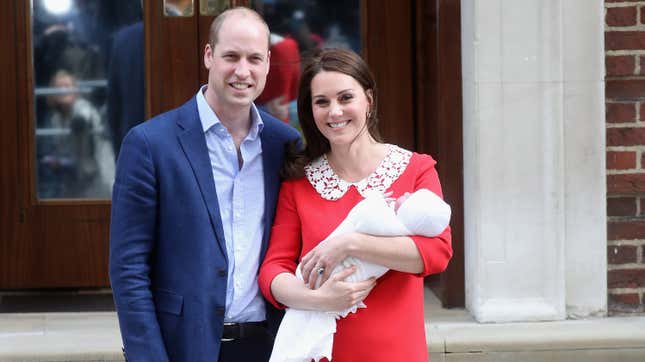

The British tabloids are mad. They are mad because Meghan and Harry have drawn a set of firm boundaries around the birth of their child: They won’t be telling the public every last detail about the birth, and they certainly won’t be posing on any hospital steps like Kate did in 2013, 2015, and 2018 as she and William left Lindo Wing. Instead, they’ll be producing their own photos, and sharing them later.
This news has been poorly received. “Keeping the nation in the dark over details, even after the birth, is a bad look for the royal couple,” wrote the Sun, according a roundup in the New York Times this week. “The public has a right to know about the lives of those largely funded by their taxes. You can accept that, or be private citizens. Not both.”
The royals and the British press have long had a close but dysfunctional relationship—one that vacillates between reverence and vitriol, access and repulsion. But with the arrival of Meghan Markle, that relationship has grown more strained. Though the British press covered the wedding with enthusiasm and excitement, the tabloids also provided a megaphone for all Meghan’s hideous relatives, and their coverage has often had ugly racist undertones. It is no wonder that Harry and Meghan would want to set boundaries.
But for royals, who fundamentally depend upon the media for their throne’s continued existence—there’s no such thing as a king without somebody seeing him as a king—boundaries are all but impossible. They always have been.
-

-

-

-

-

-

-

-

-

-

-

-

-

-

-

-

-

-

-

-

-

-

-

-

-

-

-

-

-

-

-

-

-

-

-

-

-

-

-

-








































